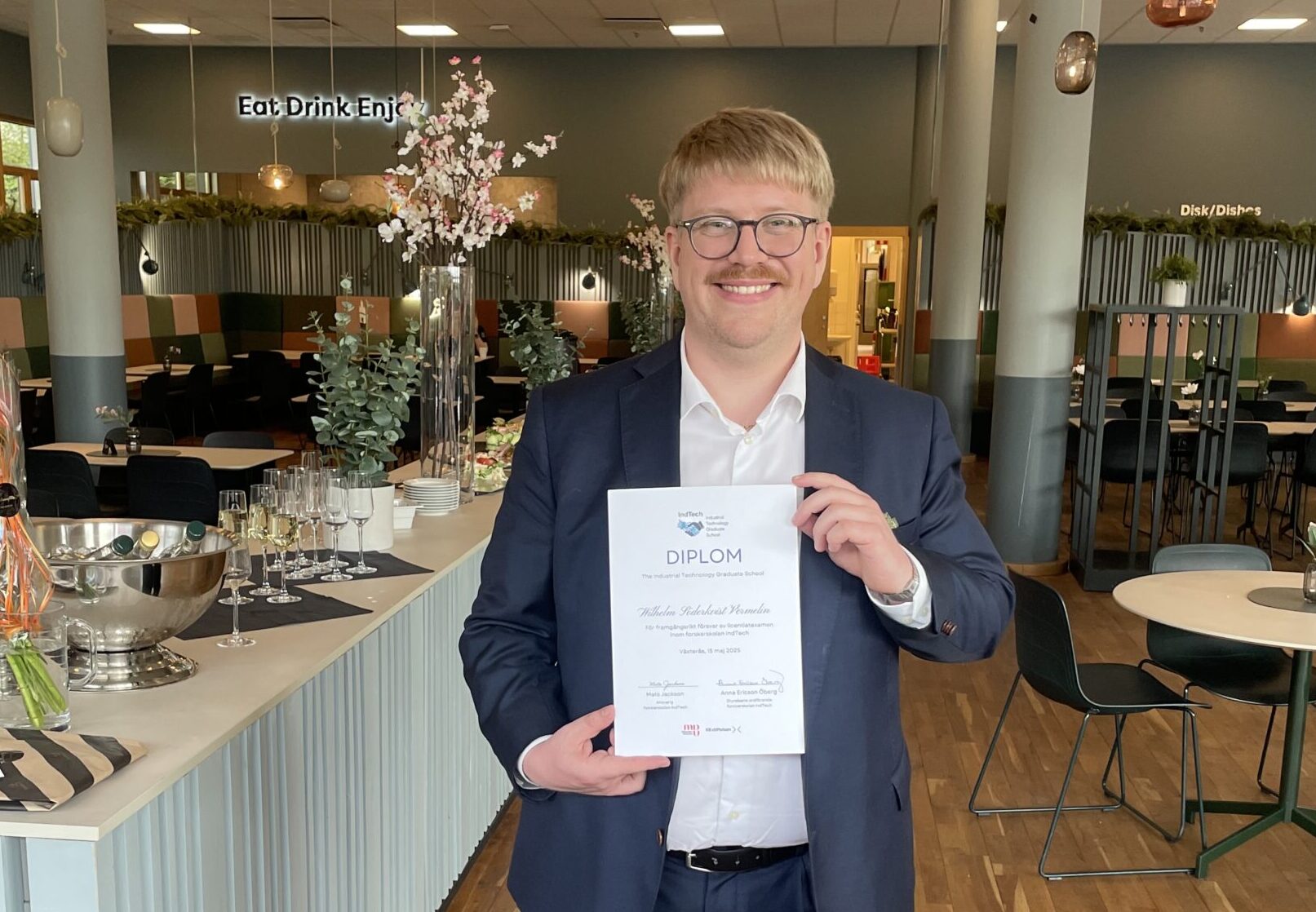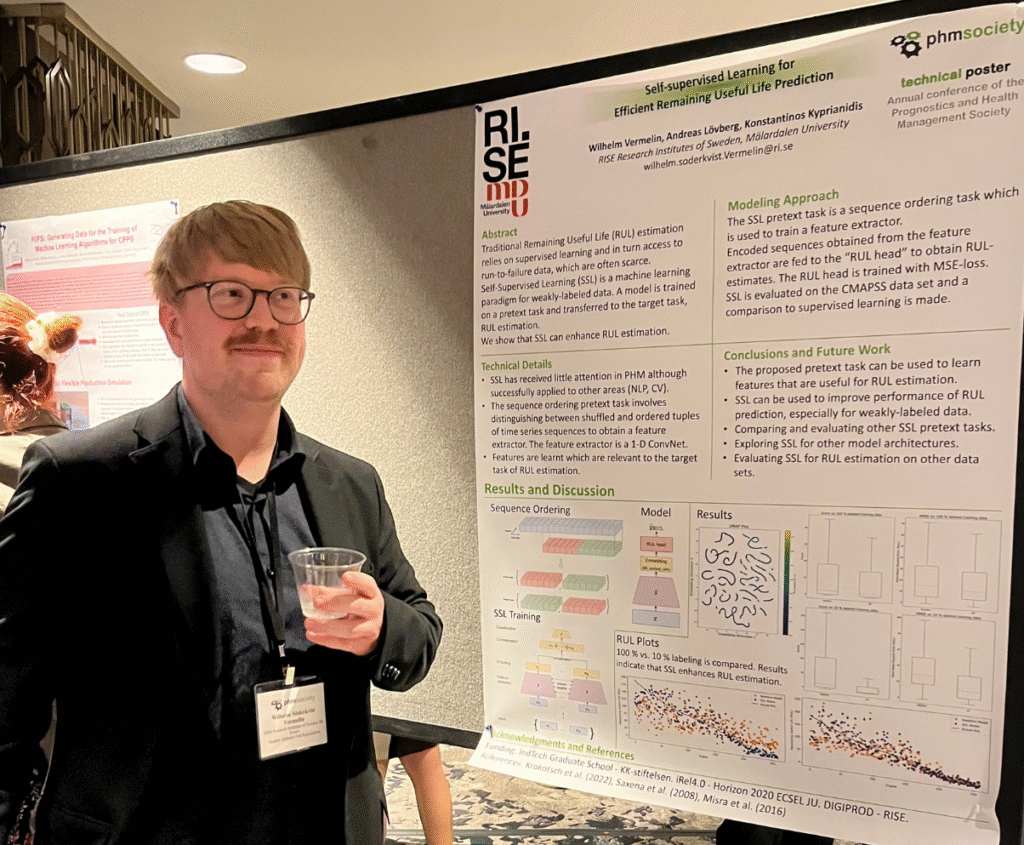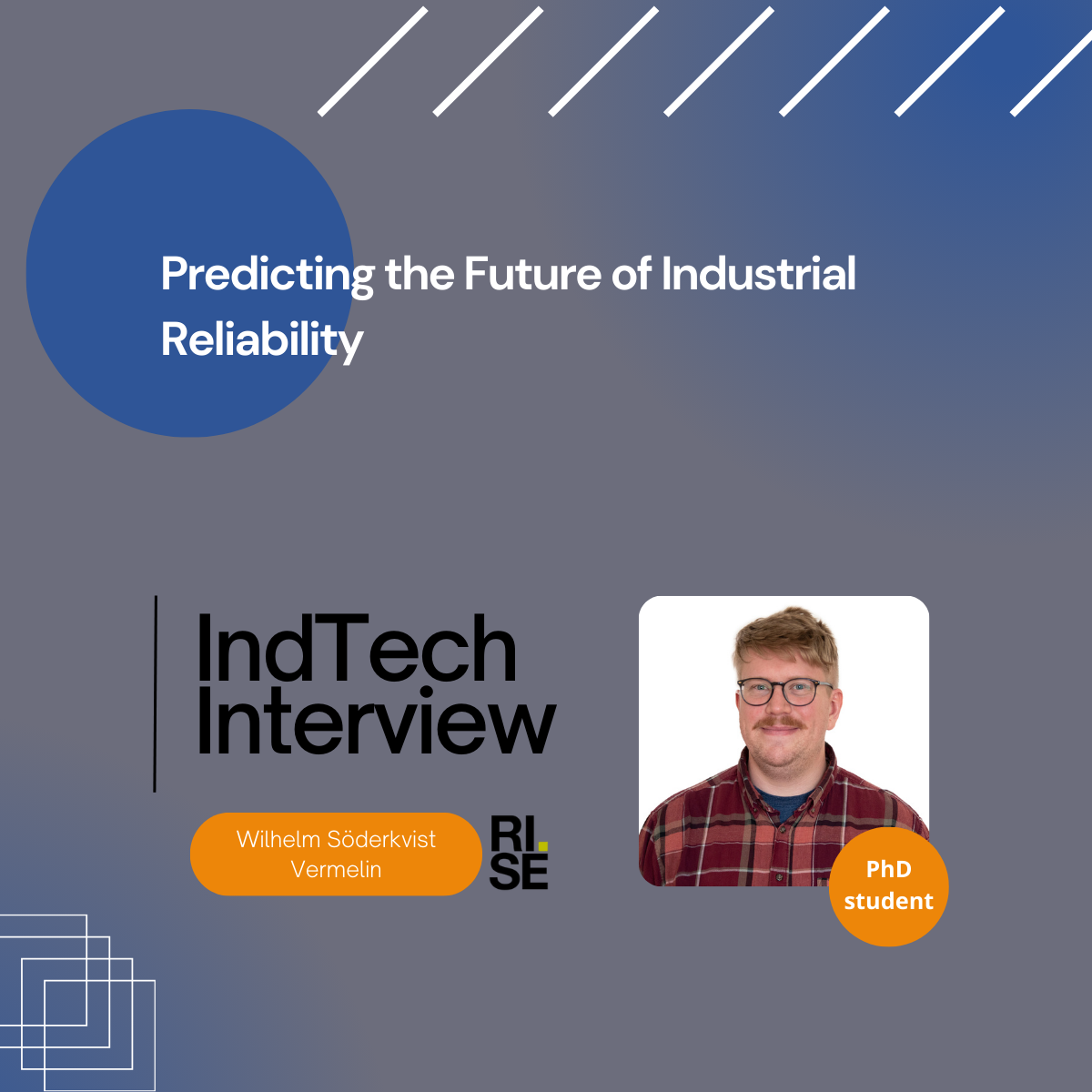Predicting the Future of Industrial Reliability: Interview with Wilhelm Söderkvist Vermelin
In industries where downtime can cost millions and safety is non-negotiable, predicting when critical equipment might fail isn’t just useful—it’s essential.
Wilhelm Söderkvist Vermelin, a PhD researcher at RISE and IndTech, who recently defended his Licentiate thesis, is bringing the power of deep learning into the world of industrial prognostics and health management. His focus: developing data-driven methods to forecast the Remaining Useful Life (RUL) of energy-intensive and safety-critical systems.
Motivation: From Reliable Products to Reliable Systems
“Energy-intensive and safety-critical industrial assets are complex, dependable systems with high expectations on availability and uptime,” Wilhelm explains. “Operators need assistance in monitoring them so failures can be detected well before they cause downtime or safety risks.”For him, motivation is as personal as it is technical.
“I, like many people, enjoy reliable products and services that can be trusted. If my research in any small way contributes to this, I’ll be happy.”

Tackling Data Challenges
Discrete power electronics—vital in automotive, manufacturing, and aerospace—are difficult to monitor at the component level due to sensor costs. To address this, Wilhelm uses a power cycling rig in the lab to simulate real-world conditions and collect detailed operational data.
In safety-critical environments, run-to-failure data is also scarce, since deliberately allowing assets to fail is too risky. Wilhelm has explored self-supervised learning to overcome this, developing a sequence ordering pretext task that lets models learn from unlabelled data before fine-tuning on smaller labelled datasets.
“We achieved similar performance with less labelled data—showing self-supervised methods have real potential.”
Data sharing poses another hurdle, as many companies cannot release sensitive operational data. Federated learning offers a workaround by enabling collaborative model training without moving raw data—only model updates are exchanged—maintaining strict data governance.
AI as a Co-Pilot and Future Directions
Rather than replacing humans, Wilhelm sees AI as an assistant in industrial environments.
“These systems will act as AI co-pilots, detecting deviations, suggesting maintenance actions, and empowering operators to make even better decisions.”
Looking ahead, he is excited to explore physics-informed neural networks (PINNs). The physics governing failures in systems like power electronics is well understood, and integrating it into AI models could combine the strengths of both physics-based and data-driven approaches.
“By incorporating known physics into AI models, we can bridge the gap between theory and data, improving prediction accuracy and trust.”
As we congratulate him, the Licentiate defence is a milestone in the PhD journey. Looking ahead, what aspects are the most excited to expand in the future?
“I recently participated in a summer school on physics-informed neural networks (PINNs) organized by KTH. This summer school was inspiring, and some of those aspects can be brought into my research. My approach thus far has been purely data-driven, but the physics governing the failure in, e.g., power electronics, is known and can be incorporated into the model. Here, PINNs play an essential role, and I am interested in exploring this connection.”

About Wilhelm Söderkvist Vermelin
Wilhelm has been working at RISE in research projects regarding digitalization of induction hardening (DigPIn, DigPIn2), data-driven disturbance handling (D3H, DFusion, SIFT) and increased reliability in electronic components (iREL4.0, PowerizeD) for years.

